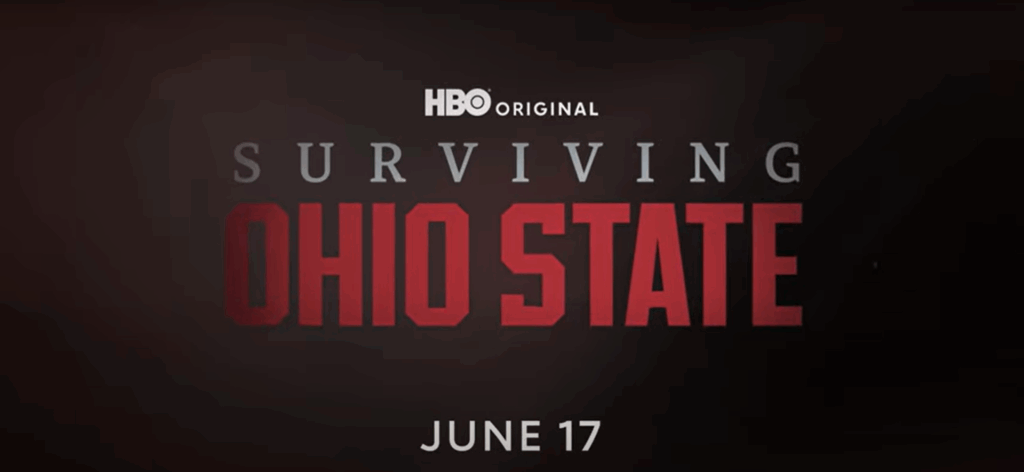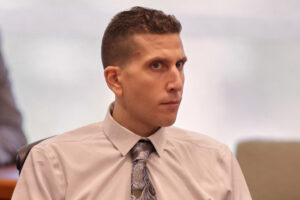
It’s hard to grasp the full impact and magnitude of Ohio State University unless you’re from Ohio. The institution is a colossal presence, boasting the highest-earning athletic department in the nation and a fervent fan base. Now, it finds itself at the center of a harrowing documentary that sheds light on sexual abuse, cover-ups, and lawsuits that have plagued the university since 2018.
Surviving Ohio State, a documentary by Eva Orner, premiered on HBO on June 17th. Based on a 2020 Sports Illustrated cover story by Jon Weirtheim, the film details the extensive sexual abuse perpetrated by Dr. Richard Strauss during his tenure as a physician at Ohio State. It also highlights the failure of coaches and administrators to intervene.
A Chilling Narrative of Abuse
The documentary amplifies the voices of Dr. Strauss’ victims, revealing the culpability of those who allowed the abuse to continue. It begins with Ohio State wrestlers recounting their traumatic experiences with Strauss, before expanding to other sports teams and non-athlete victims. The overwhelming horror culminates in the revelation that Strauss had over 2,000 victims.
The narratives from wrestlers, athletes, and students describing similar patterns of abuse are chilling. Strauss targeted young men, grooming and isolating them to facilitate his abuse. The film delves into the power dynamics that enabled Strauss, addressing the public sentiment of “Why didn’t the wrestlers just beat the old doctor up?” The complexity of this question is unpacked, illustrating how Strauss’ authority and the silence of those aware of his actions created an environment where abuse thrived.
Voices of the Victims
Mark Coleman, a National Champion Wrestler and UFC fighter, succinctly captures the sentiment of many victims: “Dr. Strauss made me angry, but I was under the impression that anger helped me do better.” The documentary shows Coleman and his teammates deserved far better, as they recount their experiences with coaches like retired Head Coach Russ Hellickson and now-Congressman, former Assistant Coach Jim Jordan.
The wrestlers’ complaints against Hellickson and Jordan are juxtaposed with the coaches’ responses to media inquiries. Hellickson, after meeting with former wrestlers, promises a letter of support that never materializes. Jordan, despite multiple firsthand accounts, denies any knowledge of Strauss’ abuse. Frederick Feeney, a wrestling official, recounts telling Jordan about Strauss: “Jim Jordan looked at me straight in the face and said it’s Strauss you know what he does.” Yet, Jordan continues to deny involvement in subsequent interviews.
Legal Battles and Institutional Failures
The documentary draws parallels with other high-profile abuse cases, such as those involving Larry Nassar and Joe Paterno. Attorney Ilaan Maazel, representing Ohio State victims, outlines the university’s legal maneuvers, from attempts to dismiss lawsuits to offering settlements significantly lower than those in similar cases at Michigan State and Penn State. Ohio State’s push to dismiss lawsuits based on expired statute of limitations claims ultimately failed.
The documentary portrays the palpable anger towards Ohio State as wrestlers confront the Board of Directors, who remain stone-faced. Will Knight, another wrestler, poignantly says “O-H” to the Board, met with silence instead of the expected “I-O.” This symbolizes the university’s failure to listen to its students and athletes.
Confronting the Legacy
For those connected to Ohio State, the documentary is a series of gut punches. It reveals a long-term cover-up of abuse and a continued fight against victims. Surviving Ohio State should be required viewing for the university’s administration and Board of Trustees. The lack of accountability is staggering, and the documentary highlights the university’s ongoing resistance to acknowledging the full extent of the abuse.
Steve Snyder-Hill, a victim of Strauss, poignantly states near the documentary’s end, “I’m a survivor of sexual assault, but I’m a victim of OSU.” His words encapsulate the betrayal felt by many victims. The documentary leaves viewers with much to ponder and questions that figures like Jim Jordan must answer regarding their inaction.
Ohio State may continue its legal battles, but it cannot erase the damage done to its reputation and the pain inflicted on its victims. The documentary serves as a powerful reminder of the need for accountability and reform in institutions of power.







